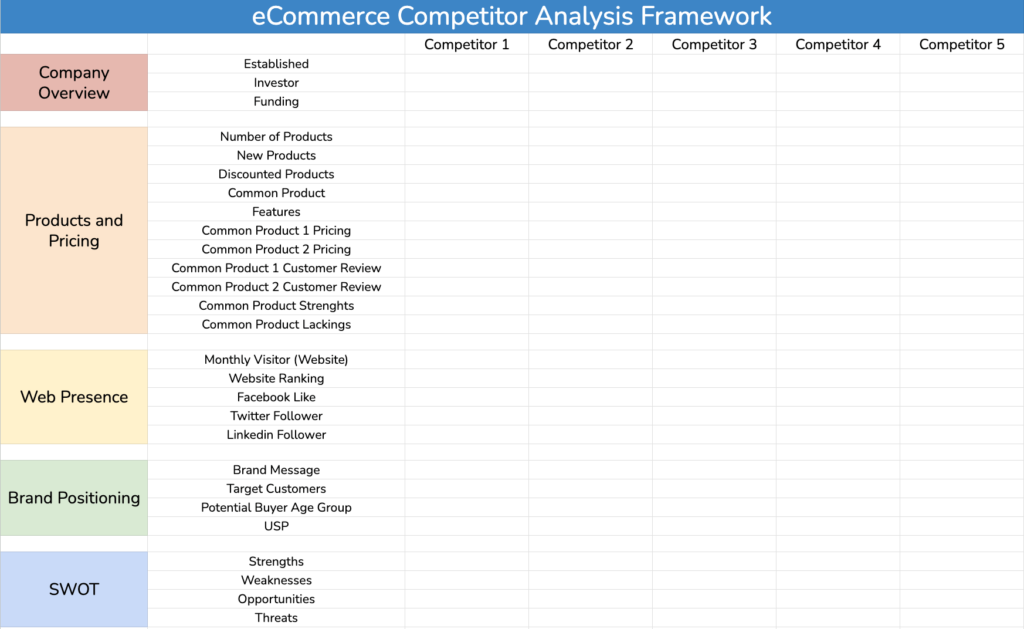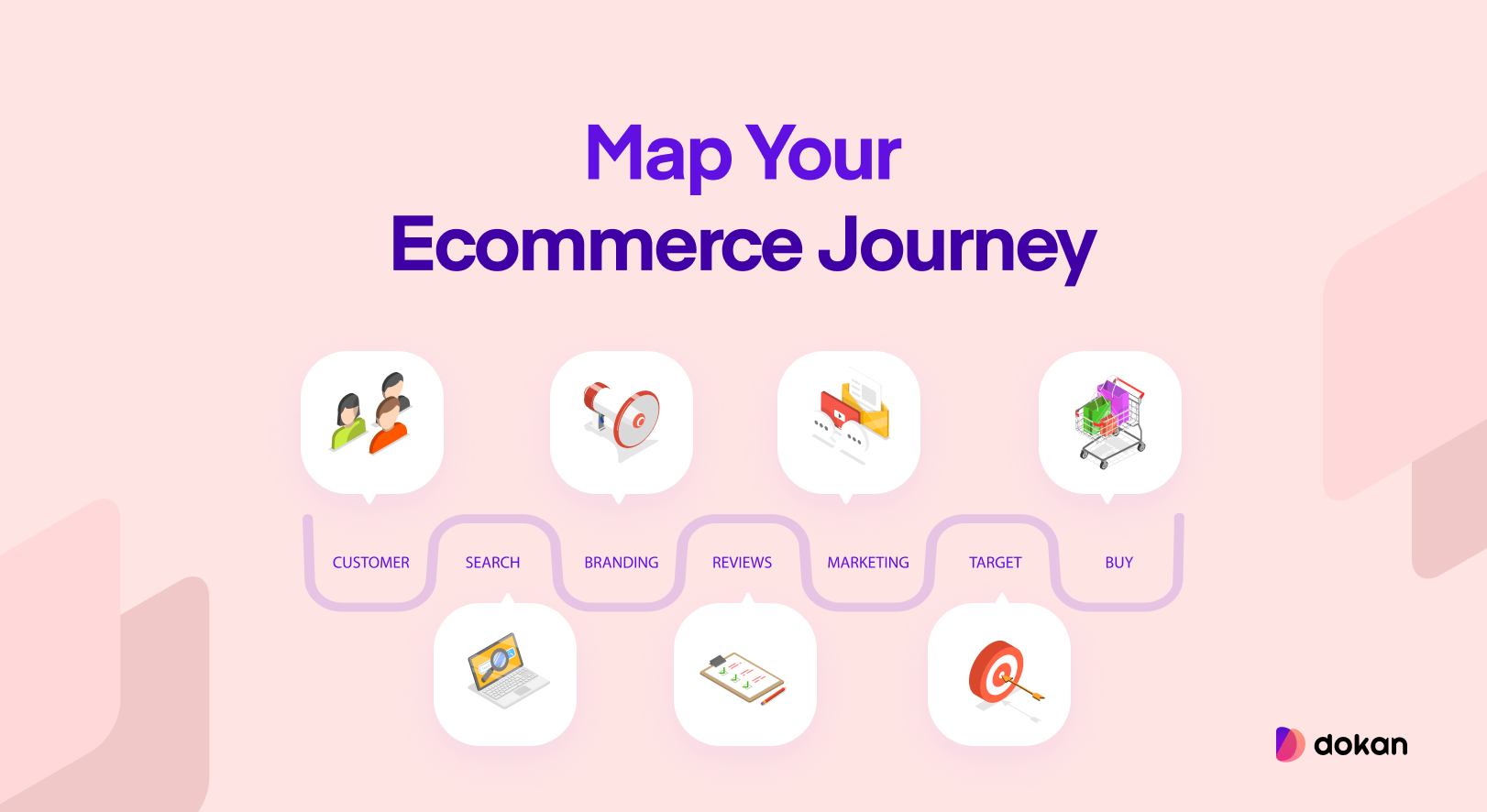In the coming days, we will see some amazing innovations in the field of marketplace business. That is why starting a marketplace has become a dream entrepreneurial prospect for many.
And according to research by Brainy Insights,
The global multi-vendor marketplace market size is expected to reach $100 billion by 2027.
You can see where the hype is coming from!
As an expert on multivendor marketplaces, we’ve seen many promising marketplace ideas fail and it is due to a lack of preparation. Most people don’t have a basic idea of how to start a marketplace.
Starting an eCommerce business and a multivendor marketplace have their differences. Although some of the basic considerations are the same, there are some obvious differences in preparation.
And creating a multivendor marketplace is not easy as it takes a lot of work to get success.
That is why today we’re going to write a detailed guide on the preparation for starting a marketplace business and making it profitable.
We will start by answering this basic question-
Definition, Types & Benefits of a Marketplace
Before learning how to start a marketplace you need to know the definition of a multivendor marketplace.
A marketplace is a physical or online where buyers and sellers can meet to exchange goods or services. Marketplaces can be found in a variety of settings, including retail stores, online auction sites, and even social media platforms.
There are different kinds of marketplaces-
- Retail marketplaces: These marketplaces sell a variety of goods to consumers, such as Amazon and Walmart.
- C2C marketplaces: These marketplaces allow consumers to sell goods to each other, such as eBay and Craigslist.
- B2B marketplaces: These marketplaces allow businesses to sell goods and services to each other, such as Alibaba and ThomasNet.
- Service marketplaces: These marketplaces allow businesses to sell services to consumers, such as Fiverr and Upwork.
So why should you create a marketplace? Well, there are quite a few benefits of starting a marketplace for all the parties involved. Such as-
- Owners
- Vendors
- Customers
Now we are going to see the benefits of creating, managing, and using a marketplace-
More Revenue Options
Based on the business models, a marketplace gives you (the owner) more options to generate revenue. You can earn from listing fees, subscription fees, commission fees, etc. You can even generate revenue from advertising as well.
For example, successful marketplace companies like Airbnb, eBay, Etsy, and Uber use the commission business model.
Major Potential for Growth
The global multivendor marketplace market size is expected to reach $60.14 billion at the end of 2023.
As you can see, there is a big opportunity for growth in a multivendor marketplace. If you play your cards right and wait patiently, then you can create a successful brand of your own.
Huge Customer Interest
One of the major advantages of a multivendor marketplace is it brings a lot of customer interest. They find more products and more options in a marketplace and it is convenient for them to shop in a marketplace.
Not only customers, but sellers are also very interested in getting listed on a marketplace.

Community
Last but not least, when you are creating a marketplace, you are creating a community. Sellers and customers come together to create a space where they buy, sell and discuss. And all that is happening around your marketplace.
More Product Options
Shopping from a marketplace is always a preferred option for customers. They get a broad range of products to choose from. Also, they get the same products from different brands at different prices.
So they can choose their preferred brands with the lowest prices.
More Promotions and Discounts
Marketplaces offer a lot of discounts for their customers. This way they attract more customers as they are getting products at less prices. This also improves the retention rate as well.
Trusted Platform and Convenience
A marketplace is considered a trusted platform for customers as they get a lot of reviews. And if popular stores get listed on the marketplace, then it also increases the trust of the customers.
Ready Traffic & Better Search Engine Results
Sellers don’t need to put extra effort in order to get traffic to their stores. Marketplace owners will do that for them. The traffic coming to the marketplace will automatically be received by them.
This is huge for any seller. Especially if they are new and have a low budget for SEO and content.
Multivendor marketplaces are always occupying the top places in search engine results. So, sellers get the benefit of a better search engine ranking.
With better SERP results, the chances of the target audience coming to the marketplace increase.
No Extra Promotions & More Opportunities to Promote Products
As marketplace owners promote their marketplaces for better reach and customer acquisition, sellers don’t need any extra promotions.
Moreover, by listing their products on a marketplace, they get more opportunities to promote their products and brands. This is a great opportunity for new sellers as it is a great chance to get promotions with a minimum listing fee!
Access to Product Analytics
In order to attract sellers, marketplace owners add advanced features like product analytics to their marketplace. So sellers can see statistics on product views, purchases, etc. It helps them to make data-driven decisions regarding their stores.
So you can see that starting a marketplace benefits marketplace owners, sellers, and customers.
How to Start a Marketplace: The Checklist You Should Consider Before Starting One

Whether you are starting a trip or starting a business, you need to have preparation for that. So, before you start your marketplace business, you need to make sure you are fully prepared.
So we have made this list that will help you prepare for any kind of challenges you will face after starting a marketplace.
- Make Sure You Have a Viable Marketplace Idea
- Conduct Research on Core Target Market and Competitors
- Determine the Features of Your Marketplace
- Choose a Profitable Business Model
- Keep a Healthy Budget
- Plan the Operations of Your Marketplace
- Launch a Minimal Viable Product (MVP)
- Launch Your Marketplace
1. Make Sure You Have a Viable Marketplace Idea
First and foremost, you need to have a viable marketplace idea. There are various ways to choose what type of marketplace you want to create.
For instance, you have great expertise in mobile parts. Also, you have quite an extensive network in the mobile community. You can start a mobile parts marketplace and use your connection to invite other mobile part vendors to join your marketplace.

Or you live in an area where there is a shortage of fresh vegetables. People need to travel far in order to buy fresh vegetables. You can use this to your advantage to create a vegetable marketplace. You can invite vendors to join your marketplace and deliver fresh vegetables to your neighborhood.
However, there is a big chance that most of the marketplace ideas you are thinking of are already covered. But if you have the expertise and confidence that you can make your marketplace idea work, then you should go for it.
Here are some popular marketplace ideas-
- Grocery marketplaces
- Food marketplace
- Healthcare marketplaces
- Electrical & Electronic Marketplaces
- Automobile marketplace, etc.
2. Conduct Research on Core Target Market and Competitors, Find Ways to Win
After locking your marketplace idea, now it is time to find your target audience and have a look at your competitors.
In order to find your target audience, you need to create a buyer persona. In order to create a buyer persona you need to define the-
- Age
- Location
- Occupation
- Education level
- Family
- Yearly income
- Possible pain points.
You can add or delete some points based on your marketplace type.
This will also help you validate your marketplace idea. After finding your target audience, you will know if your marketplace will help your audience or not.
Next, you need to do a thorough competitor research. This will give you an idea of what others are doing, the latest trend in the industry, and customer expectations.

There is an 80% chance that your marketplace idea already exists. So, you will get lots of scopes to find what they are doing and what to do from the beginning.
However, that also means the market is competitive and you need to come up with plans to beat them. Other than basic marketing tactics, you also need to come up with your own ideas by following the trend and customer demands.
Ask these questions to get a detailed look at your competitors-
- Which niche do your competitors operate in?
- What does their website look like?
- What are their features and value propositions?
- How do they charge fees?
- What does their marketing strategy look like?
- How do they engage with their customers?
- What are their guidelines for new sellers?
And then find out how you shall improve your products to compete with them.
3. Plan What Features to Add to Your Marketplace, It Should be According to Your Niche
You are almost there. Now you need to decide what features you need to add to your marketplace.
First of all, you need all the features your competitors are providing to get on par. That is where your research on your competitors will come in handy.
Next, find out if the features your competitors have added is enough for your niche. If not, then you need to find the gap and add that feature as quickly as possible.

For example, if you have a furniture marketplace, then having a quotation feature will attract customers as they can add their preferred price. This will obviously give you an advantage over your competitors.
However, make sure you have all the basic functionalities-
- Clean and Simple Vendor Registration Process
- A Comprehensive Site Search System
- Product Reviews and Ratings
- Guest Checkout System
- Order Tracking Opportunity.
You have decided the features you want to add to your marketplace. Now, according to those features, you need to find the right platform to create your marketplace.

Here is a list of marketplace solutions you can choose from-
- WordPress Solution (eg: Dokan Multivendor Marketplace Plugin)
- Sharetribe
- Magento Marketplace
- Shopify (with plugins like Multi Vendor Marketplace or Marketplace App)
- CS-Cart Multi-Vendor
- BigCommerce (with apps like Multi Vendor Marketplace or MultiMerch Marketplace)
You can choose any one of them to create your marketplace. Most of them have all the features necessary to create a marketplace.
4. Choose a Profitable Marketplace Business Model
After fixing your budget, next you need to choose a marketplace business model. There are a few kinds of marketplace business models-
- Commission-Based Model: In this model, the marketplace charges a commission or a percentage fee on each transaction conducted through the platform. The commission is usually based on the transaction value or volume. Examples include:
- Uber: Uber charges a commission fee from drivers for each completed ride.
- Etsy: Etsy charges a commission fee on each sale made by sellers on its platform.
- Subscription-Based Model: Under this model, the marketplace charges sellers or buyers a subscription fee to access the platform or avail of specific features or services. Examples include:
- LinkedIn Premium: LinkedIn offers premium subscriptions that provide enhanced features and functionalities for users.
- Shutterstock: Shutterstock offers subscription plans for users to access and download stock photos, videos, and music.
- Freemium Model: Freemium marketplaces offer basic features and services for free, but charge for premium or advanced features. Examples include:
- Dropbox: Dropbox offers a basic plan with limited storage space for free, and users can upgrade to paid plans for additional storage and advanced features.
- LinkedIn: LinkedIn provides free access to its professional networking platform, but offers premium subscriptions (LinkedIn Premium) with features like advanced search, messaging, and profile insights.
- Lead Generation Model: Marketplaces using this model generate revenue by selling leads or customer referrals to businesses. Examples include:
- Thumbtack: Thumbtack connects customers with local professionals and charges those professionals for each lead they receive.
- HomeAdvisor: HomeAdvisor connects homeowners with service professionals and charges fees for providing qualified leads.
- Advertising Model: Marketplaces in this model generate revenue by displaying ads or sponsored listings to users. Examples include:
- Google Ads: Google’s advertising platform allows businesses to display ads on search results and partner websites.
- Facebook: Facebook generates revenue by displaying targeted ads to its users based on their interests and behavior.
- Transaction Fee Model: In this model, the marketplace charges a fixed fee or a percentage of the transaction value for each transaction conducted on the platform. Examples include:
- StubHub: StubHub charges buyers and sellers transaction fees for buying and selling event tickets.
- Etsy: Etsy charges a listing fee and transaction fee for each sale made by sellers on its platform.
5. Keep a Healthy Budget
Yes, it is possible to create a marketplace for free (almost)! All you need to do is pay the fee for your domain and hosting, and you can launch your marketplace. Platforms like WordPress will give you a chance to launch your marketplace for free.
However, we advise against it. In order to compete with the big brands and your competitors, you need to have advanced facilities in your marketplace. Delivery, Shipping, Payment Gateways, Vendor Management, Geolocation, etc are some of the basic and important functionalities you need to have on your marketplace.
And you can’t achieve that with a free platform. You need the premium version of the platform, and proper hosting to handle the traffic. For that, you need to set aside a healthy budget.
Moreover, it is good to have something to rely on if anything goes south! also, you will need a healthy budget for your marketing costs as well. Initially, you will need to promote your marketplace heavily in order to gain customer attraction.
Here is a look at the expenses of a full-fledged marketplace using WordPress and SaaS-
| Cost Category | SaaS Marketplace Platform | WordPress-Based Platform |
|---|---|---|
| eCommerce Platform Cost | Typically subscription-based, with pricing tiers based on features and usage. Can range from $20 to $500+ per month, depending on the provider and package selected. | WordPress itself is free, but additional costs may include premium marketplace themes or plugins, which can range from $30 to $300 or more. |
| Domain and Hosting Plan | Included in the SaaS package, although some SaaS providers may charge extra for custom domains. | Domain registration and hosting costs vary depending on the hosting provider and plan selected. Generally ranges from $5 to $30+ per month. |
| Themes and Plugins | Limited customization options and themes are provided by the SaaS platform. Additional charges may apply for premium themes or plugins. | Wide range of free and premium themes and plugins available. Costs can vary significantly, with premium themes typically ranging from $30 to $200, and plugins from free to several hundred dollars. |
| Design and Customization | Customization options are limited to the features and tools provided by the SaaS platform. Additional customization may require hiring a developer, which can range from $500 to several thousand dollars. | WordPress provides extensive customization options. Costs depend on the complexity of design changes and whether you hire a developer or use pre-designed templates. Custom design work can range from $500 to several thousand dollars. |
| Content Cost | Content creation costs, such as product descriptions, images, videos, etc., are not included and would depend on your own resources or hiring external help. It would cost around $500. | Similar to the SaaS platform, content creation costs are separate and depend on your own resources or hiring external help. It would cost around $500. |
| SEO Cost | Some SaaS platforms provide built-in SEO features, while others may require additional SEO services from third-party providers. Costs can range from $100 to $500+ per month. | WordPress has a range of SEO plugins available, both free and premium. Costs can vary depending on the plugin chosen and any additional SEO services required. Typically ranges from $50 to $300+ per month. |
6. Plan the Operations of Your Marketplace like Managing Sellers, Shipping, Logistics, etc
After choosing your marketplace business model, you need to plan your operations. That includes-
Managing Sellers
Sellers are one of the most important aspects of your marketplace. You need to make sure of seamless management for sellers. You need to add a landing page that will make sellers better understand why they should join your marketplace.
Also, make the onboarding process as smooth as possible. Don’t make the process too complicated. But make sure you collect all the important information while onboarding. Also, make sure you have a policy set for sellers who can sell on your marketplace.

Managing Products
When developing a marketplace business, it’s important to consider implementing a robust product information system to efficiently handle the management of sellers’ products.
Additionally, you’ll need to determine whether each product is associated with a single seller or multiple sellers, as this choice will influence your platform selection, the structure of your marketplace’s operations, and how sellers can effectively manage their products.
Lastly, prioritize simplifying the selling process for your sellers by offering features like bulk product import, enabling them to seamlessly transfer their products from their own website to your marketplace.
Managing Shipping and Logistics
Prior to launching your marketplace, it is crucial to determine how you will handle the shipping and logistics aspects of your business. This involves deciding whether you will be responsible for product shipping or if sellers will manage it themselves. Additionally, you need to address inventory management and shipping expenses.

In the planning phase of your business operations, there are several other factors to consider. These include devising a marketing strategy, establishing efficient order management processes, fostering strong relationships between sellers and customers, and tackling various other aspects essential for the smooth functioning of your marketplace.
7. Launch a Minimal Viable Product (MVP)
This is one of the most crucial steps before going live. You need to launch a minimal viable product, in this case platform (MVP) to test if your marketplace is truly a market fit or not.
The idea behind an MVP (minimal viable platform) is to quickly launch a simplified version of the platform in order to gather feedback from users and understand their needs and preferences. By focusing on the essential features, website owners can save time and resources that would otherwise be spent on building complex functionalities that may not be relevant or valuable to users.
The idea is a bit different than minimal viable product. For a marketplace, you need to launch a minimal viable platform, interview some potential customers, or give access to certain users to visit your marketplace. Then you can get their feedback and know if your marketplace is ready for launching or not!
With this, you can generate initial customer traction and gain initial investment. This will also help you prepare a project specification, including detailed information on your business features, products, design, complexity, third-party integrations, and more.
8. Lastly, Launch Your Marketplace
Finally, you are done. Your online business preparation is done and now you are ready to launch your marketplace.
Post on your Facebook page, Twitter page, and all other social media handles. Post a video on Youtube and other video-sharing platforms. And if you started any subscribers list, then blast a welcome email as well.
Bonus: Some Inspirational Quotes to Get You Started
If you have decided to start your marketplace, then here are some tips from the industry leaders-
“Building a marketplace is a marathon, not a sprint. It takes time, patience, and perseverance to succeed. But if you’re willing to put in the work, you can build something truly great.”
Dharmesh Shah, CTO of HubSpot
The key to building a successful marketplace is to focus on the needs of your buyers and sellers. If you can create a platform that makes it easy for them to do business, you’ll be well on your way to success.”
Chris Sacca, Founder of Lowercase Capital
Here are some additional tips from marketplace owners:
- Start with a clear vision for your marketplace. What problem are you trying to solve? Who are your target buyers and sellers? What makes your marketplace unique?
- Do your research. There are already many successful marketplaces out there. What can you learn from them? What can you do differently?
- Build a strong team. You need a team with a variety of skills and experience to build and grow a successful marketplace.
- Be patient. It takes time to build a successful marketplace. Don’t expect to overnight success.
Hopefully, these will help you create a successful business.
FAQ(s) on How to Start a Marketplace
How do you become a successful marketplace?
1. Serve a viable industry. Most marketplace founders make the mistake of focusing on a small niche and hoping it will blow up.
2. Define your offer.
3. The right business model.
4. Build a 10x better product.
5. Build trust and grow.
How do you attract customers to your marketplace?
1. Create a pre-launch landing page and offer credits.
2. Build a referral system.
3. Provide offers freely for early registration.
4. Set different constraints.
5. Find and solve user problems.
6. Use social media.
7. Develop effective email marketing.
Be Prepared for Challenges to Start a Marketplace
Knowing the steps on how to start a marketplace will save you a lot of trouble. Going forward, you will be able to anticipate the challenges and take steps accordingly.
And even if you get in trouble, you will be able to get out of them based on the steps you have taken before.
That is why a marketplace checklist is so important. To recap, here is the checklist again for preparing for online businesses-
- Make sure you have a viable marketplace idea
- Conduct research on your competitors
- Choose a business model
- Plan the operations of your marketplace
- Choose what features you need to add to your marketplace
- Select the platform to create your marketplace
- Launch a minimal viable product (MVP)
- Publish Your Marketplace.
If you face any troubles regarding any steps, then do let us know in the comment section. We will be happy to help.
Subscribe to
Dokan blog
We send weekly newsletters, no spam for sure!







Leave a Reply